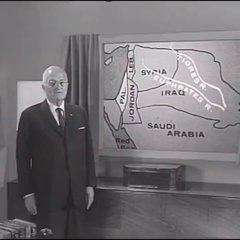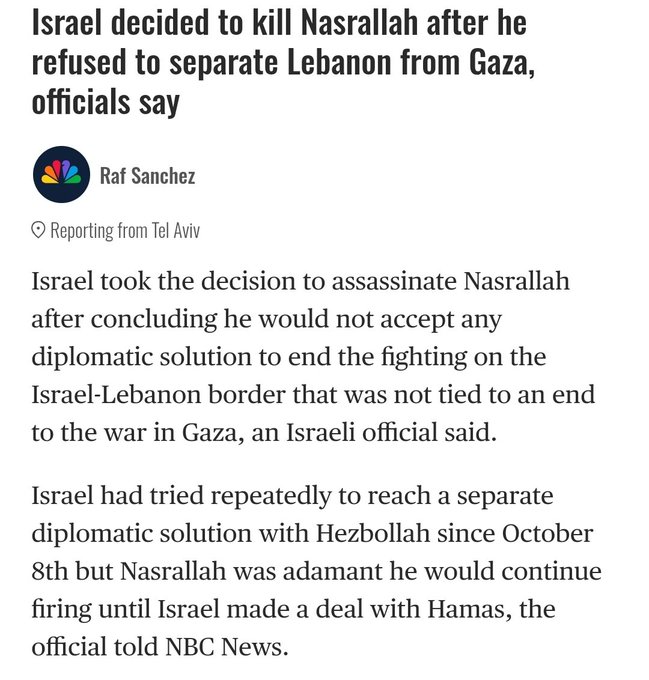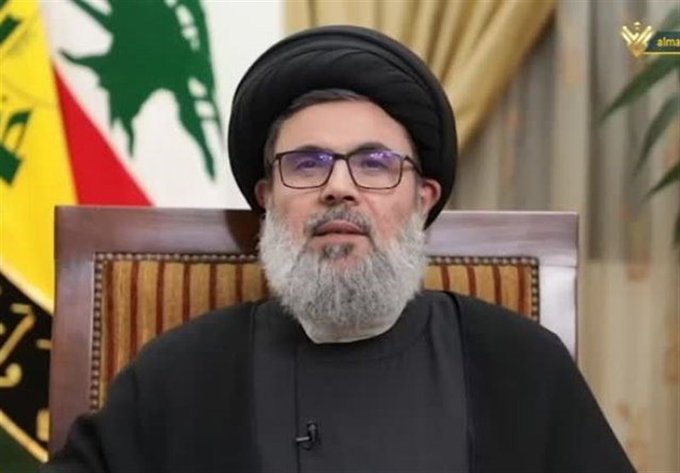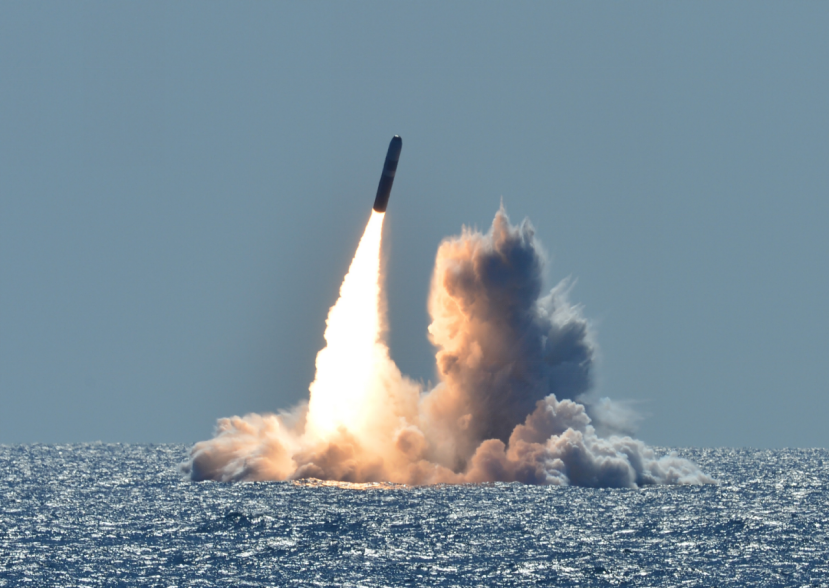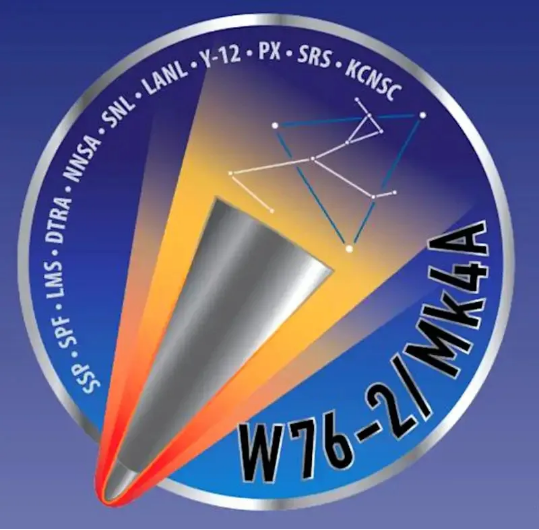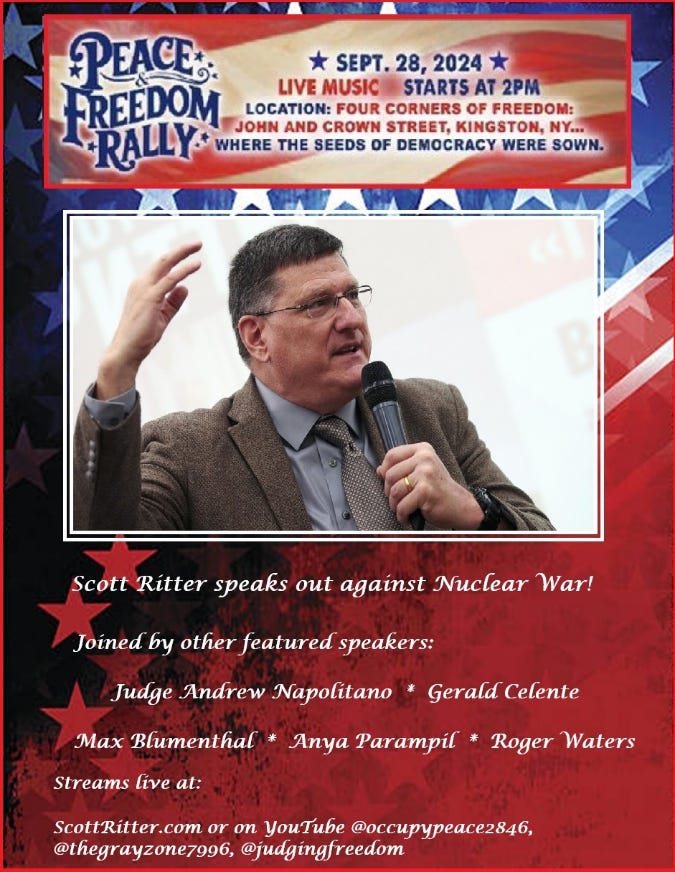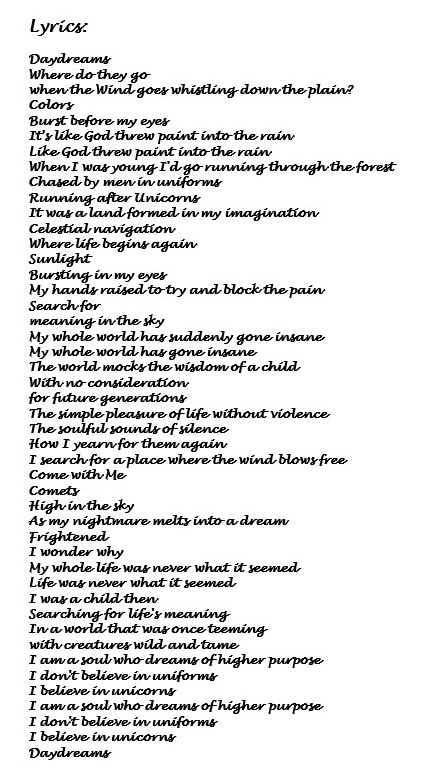***
US President Harry Truman (1945-1953) stands next to a map showing the State of Palestine.
Israel is not real.
****
“I SWEAR TO BE LOYAL TO THE GOVERNMENT OF PALESTINE” SIGNED BY ISRAELIS WHEN EMIGRATING FROM EUROPE IN THE 1930s
oooooo
Dr. Anastasia Maria Loupis@DrLoupis
Jacob Rothschild: “My family created Israel”
Israel is a fake state created by evil globalists.
Bideoa: https://x.com/i/status/1835237143465119783
oooooo
UN General Assembly overwhelmingly calls for end of Israeli occupation
Read the resolutions text here: https://www.un.org/unispal/icj-and-question-of-palestine/
oooooo
Before the Occupation took it and Renamed it Tel Aviv, her name was Yaffa
Here are some photos of Yaffa from the early 1900s
Bideoa: https://x.com/i/status/1840383527465918802
oooooo
Netanyahu at the UN earlier today: “Babies were burned alive.” Zero babies were burned, as official Israeli records confirmed long ago. Yet he keeps regurgitating all this genocidal atrocity propaganda to launder the actual mass rape and burning of Palestinians and Lebanese
Bideoa: https://x.com/i/status/1839815753912013061
oooooo
If you are someone support the mass extermination of Arab civilians in repeated military onslaughts which defy the laws of war, then you aren’t just a racist.
You’re a violent racist.
oooooo
A typical slave of Israel…
Removed his country from BRICS and sold it off. Argentina’s poverty rate has exceeded 50%. What a crack head.
oooooo
Perhaps the most underreported thing in #Gaza
Bideoa: https://x.com/i/status/1840013705540420041
oooooo
According to an Israeli official, Nasrallah literally gave his life for Palestine.
Aipamena
HalalFlow@halalflow
oooooo
Complicit is no longer a strong enough word. The USA is actually committing the Genocide.
Aipamena
I spoke twice with Israeli Minister of Defense Yoav Gallant yesterday about events in Lebanon. I expressed my full support for Israel’s right to defend itself and its people against Iranian backed terrorist groups. I stressed that the United States is determined to prevent Iran and Iranian-backed partners and proxies from exploiting the situation or expanding the conflict. I made it clear that the United States remains postured to protect U.S. forces and facilities in the region and committed to the defense of Israel.
oooooo
This picture is not of Sayed Hassan Nasrallah. This is Sayed Hashem Safiyedeen, the man groomed for years to succeed him. The two men are cousins. They look like brothers. Even their voice is the same. And yet, there is some difference.
Nasrallah, throughout his leadership, has been regarded as a moderate within the context of the broader resistance movement. While his influence and stature as a historic figure are undeniable, his approach has often been characterized by pragmatism. Safiyedeen has all the intellectual and management qualities of Nasrallah but will likely adopt a more aggressive stance, moving from Nasrallah’s diplomacy-focused leadership to a more militant posture.
Netanyahu may come to regret that he assassinated Nasrallah.
BREAKING: ANGRY IRAQI YOUTH TRY TO ENTER US EMBASSY IN IRAQ
Bideoa: https://x.com/i/status/1840078826828669204
oooooo
The President of Iran stated that the order to kill Nasrallah was given by the U.S. “Washington will not be able to absolve itself of responsibility for the assassination of the Hezbollah leader.”
oooooo
German’s Foreign minister, Baerbock, also had no audience. Nobody cares about her nonsense.
oooooo
“If Russia uses tactical nuclear weapons against individual states that allow themselves to make such statements, they will simply be left in the dust” – Dmitry Medvedev
Bideoa: https://x.com/i/status/1839735825241608211
oooooo
Russia strongly condemns Israel for the killing of Hezbollah leader Hassan Nasrallah.
oooooo
Sep 26, 2024
Launch of a Trident missile
What would you do to save Democracy? To save America? To save the world? How will you vote in November?
If you’re not thinking about the end of the world by now, you’re either braindead or stuck in some remote corner of the world, totally removed from access to news.
Last week we came closer to a nuclear conflict between the US and Russia than at any time since the Cuban Missile Crisis of 1962.
Today we are even closer.
Most scenarios being bandied about in the western mainstream media that involve a nuclear conflict between Russia and the United States have Russia initiating the exchange by using nuclear weapons against Ukraine in response to deteriorating military, economic, and/or political conditions brought on by the US and NATO successfully leveraging Ukraine as a proxy to achieve the strategic defeat of Russia.
Understand, this is what both Ukraine and the Biden administration mean when they speak of Ukraine “winning the war.”
This is a continuation of the policy objective set forth by Secretary of Defense Lloyd Austin in April 2022, “to see Russia weakened to the degree that it can’t do the kinds of things that it has done in invading Ukraine,” meaning that Russia should “not have the capability to very quickly reproduce” the forces and equipment that it loses in Ukraine.
Lloyd Austin (right) and Secretary of State Anthony Blinken (left) address the press, April 2022
This policy has failed; Russia has absorbed four new territories—Kherson, Zaporizhia, Donetsk and Lugansk—into the Russian Federation, and the Russian defense industry has not only replaced losses sustained in the Ukrainian conflict, but is currently arming and equipping an additional 600,000 troops that have been added to the Russian military since February 2022.
It is the United States and its NATO allies that find themselves on their back feet, with Europe facing economic hardship as a result of the extreme blowback that has transpired because of its sanctioning of Russian energy, and the United States watching helplessly as Russia, together with China, turns the once passive BRICS economic forum into a geopolitical juggernaut capable of challenging and surpassing the US-led G7 as the world’s most influential non-governmental organization.
Scott will discuss this article and answer audience questions on Ep. 198 of Ask the Inspector. Call us during the show at 520.525.8359, or click here to submit your question in advance.
As a result of this abysmal failure, policymakers in both the US and Europe are undertaking increasingly brazen acts of escalation designed to bring Russia to the breaking point, all premised on the assumption that all so-called “red lines” established by Russia regarding escalation are illusionary—Russia, they believe, is bluffing.
And if Russia is not bluffing?
Then, the western-generated scenario paints an apocalyptic picture which has a weak, defeated Russia using nuclear weapons against Ukraine in a last, desperate act of vengeance.
According to this scenario, which the US and NATO not only war-gamed out but made ready to implement when these entities imagined that Russia was preparing to employ nuclear weapons back in late 2022-early 2023, the US and NATO would launch a devastating response against Russian targets deep inside Russia designed to punitively degrade Russian command and control, logistics, and warfighting capacity.
This would be done using conventional weapons.
USAF F-16 drops a Joint Air Surface Standoff (JASSM) missile
If Russia opted to retaliate against NATO targets, then the US would have to make a decision—continue to climb the escalation ladder, matching Russia punch for punch until one side became exhausted, or preemptively using nuclear weapons as a means of escalating to de-escalate—launch a limited nuclear strike using low-yield nuclear weapons in hopes that Russia would back down out of fear of what would come next—a general nuclear war.
The Pentagon has integrated such a scenario into the range of nuclear pre-emption options available to the President of the United States. Indeed, in early 2020 US Strategic Command conducted an exercise where the Secretary of Defense gave the launch instructions for a US Ohio class submarine to launch a Trident missile carrying W-76-2 low yield nuclear warheads against a Russian target in a scenario involving Russian aggression against the Baltics in which Russia used a tactical nuclear weapon to strike a NATO target.
The insanity of this scenario is that it ignores published Russian nuclear doctrine, which holds that Russia will respond with the full power of its strategic nuclear arsenal in the case of a nuclear attack against Russian soil.
Once again, US nuclear war planners believe that Russia is bluffing.
There is another twist to this discussion.
While the US might assess that Russia would not seek a general nuclear war following the use by the US of low yield nuclear warheads, the problem is that the means of employment of the W-76-2 warhead is the Trident submarine launched ballistic missile.
The W-76-2 low yield nuclear warhead
While the February 2020 scenario had Russia using nuclear weapons first (something which, at the time, represented a gross deviation from published Russian nuclear doctrine and the declaratory policy statements of the Russian President), the fact is the US will not necessarily wait for Russia to kick things off on the nuclear front.
The United States has long embraced a nuclear posture which not only incorporates the potential of a nuclear first strike, but, through declaratory policy statements, actively encourages America’s potential nuclear adversaries to believe such an action is, in fact, possible. David J. Trachtenberg, the deputy undersecretary of defense for policy during the Trump administration, said in a speech at the Brookings Institution in 2019 that a key aspect to the US nuclear posture was “keeping adversaries such as Russia and China guessing whether the US would ever employ its nuclear weapons.”
But the US takes the guesswork out of the equation. Theodore Postol points out, in a recent article in Responsible Statecraft, that a new fuse used on the W-76 nuclear warhead (not the low yield W-76-2, but rather the 100 kiloton version) has turned the 890 W-76 warheads loaded on the Trident missiles carried onboard the Ohio-class ballistic missile submarines into weapons capable of destroying hardened Russian and Chinese missile silos with a single warhead.
W-76 nuclear warhead
This means that, firing in a reduced trajectory profile from a position close to the shores of either Russia or China, the United States possesses the ability to launch a nuclear first strike that has a good chance of knocking out the entire ground-based component of both the Chinese and Russian strategic nuclear deterrent. As a result, Russia has been compelled to embrace a “launch on detect” nuclear posture where it would employ the totality of its silo-based arsenal the moment it detected any potential first strike by the United States.
Return, for a moment, to the scenario-driven employment of the W-76-2 low yield nuclear weapon as part of the “escalate to de-escalate” strategy that underpins the entire reason for the W-76-2 weapon to exist in the first place.
When the United States launches the Trident missile carrying the low yield warhead, how are the Russians supposed to interpret this act?
The fact is, if the US ever fires a W-76-2 warhead using a Trident missile, the Russians will assess this action as the initiation of a nuclear first strike and order the launching of its own nuclear arsenal in response.
All because the United States has embraced a policy of “first strike ambiguity” designed to keep the Russians and Chinese guessing about American nuclear intentions.
And, to put icing on this nuclear cake, Russia’s response appears to have been to change its nuclear posture to embrace a similar posture of nuclear pre-emption, meaning that rather than wait for the US to actually launch a nuclear-armed missile or missiles against a Russian target, Russia will now seek to pre-empt such an attack by launching its own pre-emptive nuclear strike designed to eliminate the US land-based nuclear deterrent force.
In a sane world, both sides would recognize the inherent dangers of such a forward-leaning posture, and take corrective action.
But we no longer live in a sane world.
Moreover, given the fact that the underlying principle guiding US policies toward Russia is the misplaced notion that Russia is bluffing, any aggressive posturing we might engage in designed to promote and exploit the ambiguity derived from the first-strike potential inherent in existing US nuclear posture will, more likely than not, only fuel Russian paranoia about a potential US nuclear pre-emption, prompting Russia to pre-empt.
Russia isn’t bluffing.
And our refusal to acknowledge this has embarked us on a path where we appear more than willing to pre-empt life itself.
We need to pre-empt nuclear preemption by embracing a policy of strict no first use principles.
By choosing deterrence over warfighting.
By deemphasizing nuclear war.
By controlling nuclear weapons through verifiable arms control treaties.
And by eliminating nuclear weapons.
It truly is an existential choice—nuclear weapons or life.
Because they are incompatible with one another.
The author will be speaking on the danger of nuclear war and the need for policies that seek to avoid confrontation between the United States and Russia at the Peace & Freedom Rally this Saturday, September 28, in Kingston, New York.
oooooo
Make Music Videos, Not War
Sep 30, 2024
About a year ago, I began to put in motion plans to make a documentary film about my trips to Russia, my friendship with Alexander Zyrianov (the Russian civic and business leader who, on his own initiative and expense, hosted me during my visits), and the message of peaceful cohabitation on the part of the American and Russian people these trips were designed to promote.
One of the components of this project was the idea of a compelling soundtrack. Roger Waters, the legendary frontman of the legendary band, Pink Floyd, who has gone on to win acclaim as a solo artist and compassionate and articulate advocate for peace and justice, had been kind enough to allow me to make use of his classic song about the danger of nuclear war, “Two Suns in the Sunset.” Given that the documentary was designed to tell a single story from a Russian and American perspective, I reached out to two famous artists from the Russian Federation—Shaman, perhaps the hottest ticket in Russian now (think Taylor Swift, but on steroids), and Ilyas Ebiev (the Chechen Elvis Presley) to see how we could bring about a collaboration.
I reached out to my good friend, the renowned composer and music producer, Malcolm Burn (who also hosts a fantastic weekly radio show, “The Long Way Around,” on Radio Kingston/WKNY 1440 AM), to see if he might be willing to bring his considerable experience and expertise into the mix on this project; to my immense delight, Malcolm agreed. I was in the process of lining up the “talent” and a studio for the trip I was planning to Russia in late December 2023 when Malcolm informed me that he was unable to travel for personal reasons. We both agreed that the project remained a worthy one, and that we would press forward when the time was right.
Ilyas Ebiev (left), and the Author and Malcolm Burns (right)
Before Malcolm had to withdraw from the trip, I had sent him a piece of music that had been composed by my daughter, Patricia, when she was in Middle School. Malcolm listened to it, and reported back to me: “I can do something with this.”
“This” was a somber piano melody which my daughter had originally entitled “the theme song for Animara.”
Animara (an anagram of my wife’s name—Marina) was a make-believe world that Patricia and her twin sister, Victoria, had imagined after being traumatized by the Al Gore film, “An Inconvenient Truth,” which forecasted the end of life on earth because of climate change. In the many hours of conversation that followed, we discussed man’s relationship with Mother Nature, and the need for all of us to treat the planet we inhabit with greater respect.
Among the topics covered in these lengthy discourses was the danger posed by nuclear war. My daughters simply could not wrap their head around the logic of mutually assured destruction and, by extension, the purpose behind nuclear weapons—especially after we had learned from the dual bombings of Hiroshima and Nagasaki by the United States at the end of the Second World War. As our discussions turned from defining problems toward implementing solutions, Patricia and Victoria began imagining what a perfect world would look like if we could start from scratch and remove the human factor from the equation. This world was filled with fantastic creatures and complex ecosystems possessing both natural and social order.
They then populated it with human refugees who had fled a dying planet and were given the chance to start over.
Scott will discuss this post and answer audience questions on Ep. 199 of Ask the Inspector.
What started as a pleasant exercise, however, devolved into tragedy, as may daughters, applying fact-based logic, quickly realized that the human race was self-destructively parasitic. In the end, the only way to save Animara was to purge it of the parasites.
I worked with my daughters to capture their stories on paper (we even completed the first volume of what was intended to be a multi-volume series), and both daughters would sketch out their vision of what Animara would look like, including elaborate depictions of the vegetation and life that the human refugees would find when they arrived.
The world of Animara, as envisioned by my daughters
Life intervened (and by life, I mean boys), and the imaginary world of Animara gave way to the drama of high school and beyond.
But Patricia’s song and the drawings she did with her sister, Victoria, remained with me.
This past June I was scheduled to return to Russia, where I was planning to complete filming of the documentary film. Malcolm and I had discussed the possibility of his helping produce music remotely, and I was planning on meeting with Russian music producers and musicians to see if we could record some songs that could be used in the film. One of the ideas I had was to let Shaman and others listen to the piano tune Patricia had recorded for Malcolm, and to see if it could be incorporated into an original new song that Shaman and others might record for us.
Fate once again conspired, in the form of the US government, which dispatched three Customs and Border Patrol agents to prevent me from traveling to Russia by seizing my passport just as I was about to board my flight.
With the documentary on hold, and no immediate prospects of being able to travel to Russia, I turned my attention to new projects, one of which was working with Gerald Celente, who was planning a “Peace & Freedom Rally” in Kingston, New York, scheduled for September 28. I had met with Gerald and our fellow co-conspirator, Judge Andrew Napolitano, back in June, where we talked about a shared vision of what the rally could look like. There, seated around a table overlooking the Catskill Mountains, I sketched out the idea for “Operation DAWN,” my plan for empowering Americans to save Democracy, America, and the World through their vote in November.
I had sold both Gerald and the Judge on my concern about the danger of nuclear war, and we all decided that I would make that the topic of a presentation I would be making at the rally.
Back home, I started thinking about how I would try and explain the importance of this issue to me in a way that would resonate with most Americans. One of the emotions I was feeling was anger—anger that my government, without consulting me, had embarked on a policy direction that had us on the cusp of a nuclear war no one was aware was about to be fought.
This wasn’t just a betrayal of the Constitutional Republic which the government was sworn to defend, but—perhaps more importantly—a personal betrayal of every American who had embraced the American dream of putting down roots and raising a family, working hard for a future which, because of the threat of nuclear war, might never come.
I was transported back in time to the conversations I had with my daughters about Animara and decided that the best way to capture the source of my anger would be to bring Animara to life in a way that could be shared with as broad an audience as possible.
There wasn’t time to turn the single volume of the Animara series into something that could be readily shared. Moreover, reading a dystopian children’s novel didn’t seem like the go-to move for a Saturday afternoon rally.
Patricia’s song, however, could be the ticket. I reached out to Malcolm, who agreed to make his studio and skills as a musician and music producer available. I then sat down and wrote some lyrics that I thought best captured the mood of the music and the message of Animara.
Originally, I had hoped we would be able to attract the talent of a certain well-known female singer who makes her home in the Kingston area and see if she would provide the vocals for what had become the song known as “Daydreams.” Time, however, was of the essence, so I asked Patricia to come to Kingston to lay down the piano track of her song, and to provide vocals which would then be re-recorded by the desired talent. Patricia reluctantly agreed—but on the condition that the version she recorded would not be shared with anyone outside Malcolm’s studio.
My daughter, Patricia, in Malcolm Burn’s studio, recording the vocals to “Daydream.”
Having never been involved with the production of a record, I had no idea what to expect when my daughter and I entered Malcolm’s home studio. I can say we were immediately put at ease by the comfortable setting, which was more like entering a music museum (Malcolm has a world-class collection of guitars acquired over the years, many of them gifts from the various musicians he helped produce.)
Malcolm had Patricia play her piano piece several times, while recording. He made some suggestions, Patricia came up with some of her own, and pretty soon Malcolm said, “I think we got enough for a record.”
Patricia then—reluctantly—had herself recorded singing the lyrics.
Malcolm then added a bass track and—in a moment of inspired genius—added a children’s piano in the part of the song I had envisioned having more of a guitar jam. Malcolm did this after listening to my back-story about the origins of the song. He believed it best captured the essence of the child’s experience.
He was right.
Later, after Patricia and I left, Malcolm slapped some “cellos on the front and back” (a line from one of the many tales of producing big stars that Malcolm regaled us with during the recording session to put Patricia at ease.) The “cellos” were actually synthesized strings which gave the song a melodic quality that turned it from a simple tune into something much more powerful.
And thus was born the song “Daydreams.”
Unfortunately for Patricia, the female singer I had hoped for wasn’t available, and if we were going to go forward with the music video, it would be with Patricia’s voice—something she was adamantly opposed to.
Sam (left) and Victoria (right) making the illustrations used in the music video of “Daydreams”
While I struggled to change Patricia’s mind, I had another problem—how to turn a song into a music video. Operating off my vision of trying to capture the “spirit of Animara,” I turned to Patricia’s sister, Victoria, for help. Victoria had worked with her sister to illustrate the Animara world and story, and I asked her to help me recreate that world in a way that could be captured for use in a video.
We were running out of time. Victoria and her fiancé, Sam, came up to Delmar from their apartment in New York City, and camped out in the kitchen of my home, which I had pre-stocked with art supplies. I sketched out a very rough storyboard and described the emotions I was hoping to convey. Victoria and Sam did the rest, working non-stop for two days to turn theory into reality. I can say without fear of contradiction that their work exceeded in quality what would have been produced by a team of animators operating under similar time constraints and adapting to the whim of a fickle director.
Armed with the drawings, I then turned to Megan Zebrowski, a video editor I had originally retained to assist with the production of video shorts I was planning to produce in support of the planned visit to Russia. Megan was able to meld music and images into a video which perfectly captured the emotions I was trying to convey.
I got the video to the technical director of the Kingston rally on Thursday—three days before the rally.
And the rest is history.
I hope this song, as depicted in this video, moves a larger audience to come together to oppose the insanity of nuclear war.
The fact that I have helped bring to life visions drawn from the childhood of my daughters represents one of the greatest rewards a father could ever have.
Thank you, Vicka and Patty.
Your Father loves you very much.
This is for all the children in the world—the future generations—which are threatened by nuclear war.
I don’t believe in uniforms.
I believe in unicorns.
Come with me.
oooooo
Thank you
@RealScottRitter explaining how close we are to the end of all days when we keep pressing buttons with people we don’t need to.
Bideoa: https://x.com/i/status/1840355009474498748
oooooo
Joe Lauria Spot On When They Blame Putin for Starting the War, Show Them This
Bideoa: https://x.com/i/status/1840221939480051885
ooo
Euskal Herriko bi cantamañanas-entzat: Caballo Loco eta Mr Mikel Ayestaran, bi NATO zale amorratuentzat!…
oooooo
Scott Ritter at the Peace & Freedom Rally in Kingston, NY – Sep. 28, 2024
Bideoa: https://x.com/i/status/1840220735752622142
(11:22 m)
oooooo
My latest for Energy Intelligence:
ooo
The Origins and Consequences of Brics Expansion
(https://www.energyintel.com/00000192-32ae-d673-a7b3-fbbf01970000)
The Origins and Consequences of Brics Expansion
Sep 27, 2024
Author

Dilok Klaisataporn/Shutterstock
From Oct. 22-24, Russia will host the annual Brics summit in the city of Kazan. This meeting is intended to create an organization which, by mandate and structure, can challenge the US-led, rules-based international order and, in doing so, look to supplant US unilateralism with a multipolar reality that will define global geopolitics for the next century.
In a month’s time, Russia will convene the 16th Brics summit in the city of Kazan. Brics was formed in 2009 by four original members: Brazil, Russia, India and China. South Africa joined in 2010.
Encompassing 30% of the world’s land mass and 45% of its population, Brics was created to provide a forum for industrial powers that were excluded from the so-called “collective West” and their economic forum, the G7, an intergovernmental organization ostensibly made up of the world’s largest developed economies. However, China and India are the second- and fifth-largest economies in the world, and Brazil’s economy exceeds those of G7 members Canada and Italy.
For much of its history, Brics has also functioned as an informal gathering of the top economic powers of the so-called “Global South,” a term that broadly comprises Africa, Latin America and the Caribbean, Asia (excluding Israel, Japan and South Korea) and Oceania (excluding Australia and New Zealand).
Changing Nature
As initially organized, the Brics forum sought to avoid being seen as a competitor to either the G7 or its derivative, the G20 (which includes the Brics members in its ranks), opting instead to engage in informal consultation as opposed to formulating and implementing structured policy. Geopolitics, however, mandated a change in this stance. On Feb. 4, 2022, Russian President Vladimir Putin and Chinese President Xi Jinping met in Beijing, where they released a 5,000-plus word joint statement that signaled the beginning of an adversarial relationship between these two core Brics members and the “rules-based international order” that underpinned the foreign and national security of the US and, by extension, its partners in the G7 and Nato. The impetus for this meeting, and the joint statement, were the dual crises involving Ukraine and Taiwan that were interpreted by Russia and China, respectively, as being driven by polices of the US.
The statement was critical of “some actors representing but the minority on the international scale” who “continue to advocate unilateral approaches to addressing international issues.” Noting that the world was “entering a new era of rapid development and profound transformation,” the Russian and Chinese leaders emphasized the need for a “transformation of the global governance architecture and world order” that would lead to a “redistribution of power in the world.”
The joint statement highlighted three primary vectors for achieving this transformational change — the G20, the Shanghai Cooperation Organization (SCO) and Brics. The G20 was an “important forum for discussing international cooperation issues,” the statement said, while the SCO helped shape “a polycentric world order based on the universally recognized principles of international law, multilateralism, equal, joint, indivisible, comprehensive and sustainable security.”
Both Russia and China recognized the role played by Brics in promoting expanded cooperation in three main areas: politics and security, economy and finance, and humanitarian exchanges. But Brics was limited in terms of the scope and scale of what it could accomplish, in terms of both global reach and organizational capacity. To position Brics to be a game changer on the world stage, significant work would have to be done regarding outreach and structure. This was seen as an ongoing effort, with no pressing timeline attached.
Geopolitical Driver
The war in Ukraine, however, changed everything. Literally overnight, Russia found itself facing a strategic effort by the US and its allies in Europe and the Pacific to undermine its economy through stringent sanctions and erode domestic confidence in its political leadership through diplomatic isolation and criticism. While the US and its allies condemned the Russian invasion of Ukraine, much of the Global South, although not supporting Russian actions, took a neutral stance.
The approach taken by the US and its allies reinforced Russia and China’s criticism of unilateralism. The effort to dictate economic priorities to the world, and the use of the international banking system for political ends by seizing Russian deposits, alienated many nations, which became concerned that, under different circumstances, such tactics could be employed against them.
Neither the G20 nor the SCO offered Russia and China structures capable of standing up to the US-dominated, rules-based international order. Brics, however, turned out to be the perfect venue for attempting to build from scratch a new world order capable of competing with what Russia and China viewed as the global hegemony of the US.
At the 14th Brics summit, hosted by China in 2022, Russia helped advance the idea of a new global reserve currency1 alongside China and other Brics nations as a potential challenge to the dominance of the US dollar — the first substantive push-back to the US-led order. Then, during the 15th Brics summit in 2023 headed by South Africa, the group underwent a major expansion, inviting six nations to join its ranks: Iran, Egypt, Ethiopia, the United Arab Emirates, Saudi Arabia and Argentina. Buenos Aires declined to join, while Riyadh opted to forgo formal membership for now, while participating in all Brics functions as an invited state.
The Kazan Agenda
Russia assumed the chair of the newly expanded Brics forum in January 2024, and immediately set out an assertive agenda that emphasized the continued growth of the organization, in terms of both membership and organizational structure and capacity. Ahead of the Brics summit in Kazan, Russia has implemented more than 140 events in preparation. Given that Brics is a consensus-based forum, permanent structured mechanisms for policy coordination will be vital if the organization is to compete on the global stage with the likes of the G7. Building such structures has been Russia’s main objective during its chairmanship.
Russia is seeking to continue the trend of physically expanding Brics as well, extending invitations to the leaders of 36 nations to attend the Kazan summit. As of now, 18 have accepted, including Turkey, Azerbaijan, Malaysia, Venezuela, Serbia and Algeria. While the exact list of nations that will receive formal invitations to join Brics in Kazan has not been finalized, the geopolitical ramifications of expansion are considerable. Turkish membership, for example, would create complications within the ranks of Nato.
Regardless of the results of Brics’ physical expansion, one thing seems certain — if Russia can bring into fruition the structural and organizational changes it has set in motion for the Kazan Summit, the group that will emerge could have formidable potential. Given the current trajectories of geopolitics, this would position Brics to become a more important international forum for economic, social and political issues in the years to come, potentially helping to advance the vision of a multipolar challenger to US unilateralism first laid out by Russia and China in Beijing in February 2022.
Scott Ritter is a former US Marine Corps intelligence officer whose service over a 20-plus-year career included tours of duty in the former Soviet Union implementing arms control agreements, serving on the staff of US Gen. Norman Schwarzkopf during the Gulf War and later as a chief weapons inspector with the UN in Iraq from 1991-98. The views expressed in this article are those of the author.
oooooo
We Basques do need a real Basque independent State in the Western Pyrenees, just a democratic lay or secular state, with all the formal characteristics of any independent State: Central Bank, Treasury, proper currency, out of the European Distopia and faraway from NAT0, maybe being a BRICS partner…
Gogoratu ondoko hau: Estatua eskatuz (Reclaiming the State)
Ikus The self-financing state: an institutional analysis of government expenditure, revenue collection and debt issuance operations in the United Kingdom (https://www.ucl.ac.uk/bartlett/public-purpose/sites/bartlett_public_purpose/files/the_self-financing_state_an_institutional_analysis_of_government_expenditure_revenue_collection_and_debt_issuance_operations_in_the_united_kingdom.pdf)
Hona hemen gehigarri adierazgarri batzuk:
Aspaldi honetan, NATO dela kausa, “Europar Distopia versus Europa (EFTA, kasu)” delakoaren ordez, hauxe proposatzen dut: BRICS delakoan sartzea, EFTA-tik BRICS-era
Euskal Herria: independentzia (2024)
Poiesisa, poesia, sormena: Independentzia
Gehigarri orokorrak:
MTM (Moneta-Teoria Modernoa), behin eta berriz:
Moneta-Teoria Modernoa (MTM): Bill eta Warren-en abentura bikaina
ooooooo
MMT: Modern Monetary Theory
Understanding how money works so that we can address climate change easily and prosperously plus address AI’s impact on humanity.
Members: https://x.com/i/communities/1672597800385921024/members
(…)
oooooo
1 Forget it and #LearnMMT.

